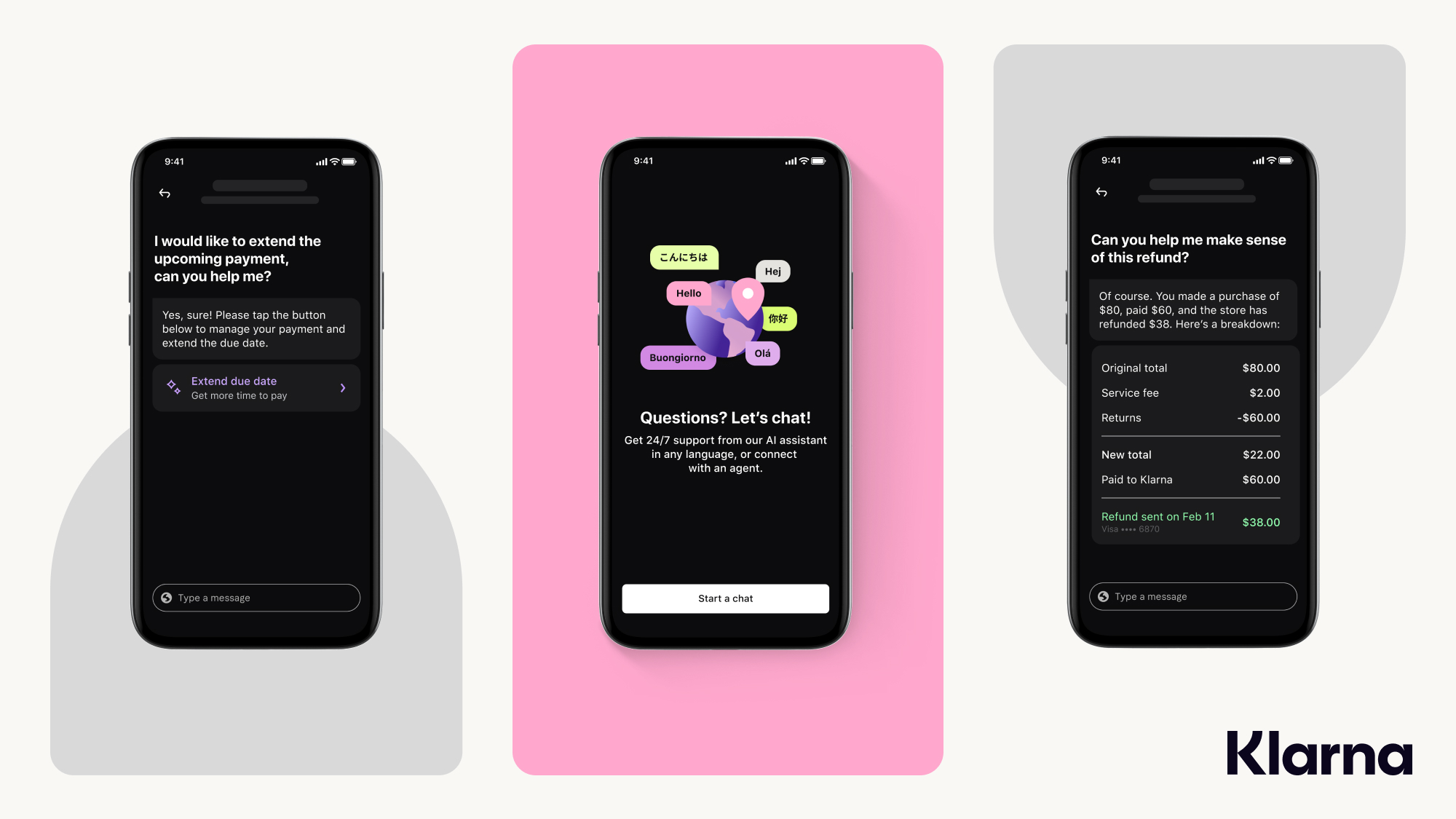A Look at the AI Advancements Promising to Alter Fashion’s Biggest Revenue Channel
By Mark Wittmer
The age of AI is upon us, and nobody is safe: not even fashion. From sourcing and design to manufacturing and distribution, new tools and opportunities are emerging each day that have the potential to radically reorient business as usual.

It sounds like a lot, and AI’s promise to radically alter the landscape of the fashion industry in nearly every point in its supply chain is undeniably intimidating. But emerging tools that are shaping how customers interact with digital marketing platforms are providing an accessible and powerful way for fashion brands and retailers to incorporate AI’s potential into the front end of their business and quickly see results. These possibilities are far-reaching, but here we’ll look at four key categories: data, search, recommendations, and customer service.
Index
- Big Data
- Search Results
- Revitalized Recommendations
- Customer Service
Big Data
When it comes to ecommerce (as well as many other areas), AI’s power and potential begins and ends with data. Though data analysis is an essential tool in understanding customers and therefore increasing returns and expanding a customer base, it can often be a nebulous and intricate practice that most retailers aren’t equipped to fully make the most of.
This is one of the most important realms where AI will become an essential tool for staying competitive in a technologically advanced future, especially when it comes to direct to consumer channels. Most retailers have lacked the technical capability to fully capitalize on the information contained within company databases and translate the insight that data offers into successful initiatives. With the emergence of AI data management tools, they can generate such insights at the click of a button, streamlining the administrative process and making forecasting simpler and more accurate.

The insights and organizational capability afforded by these data management tools can lead to increased efficiency across a retailer’s entire digital footprint, and beyond. With the time and manpower that has been saved by streamlining the data analysis process, companies can invest more into people and product. That same data processing power is also instrumental in developing other core areas of digital retail services: search, recommendations, and customer service.
Search Results
AI-powered ecommerce platforms are increasingly utilizing natural language processing techniques to better understand user queries. Traditional keyword-based search systems often struggled to interpret complex search queries effectively. But with advancements in NLP, AI can now understand the semantics and context of user queries more accurately. For example, if a user searches for “strappy heels for mob wife party,” AI algorithms can parse this query to understand the user’s intent and return relevant results that match both the aesthetic description and intentionality, even if the product descriptions don’t explicitly contain those exact keywords.

Meanwhile, visual search technologies are expanding the capabilities of search engines and in-site search beyond text. Instead of relying solely on text-based queries, users can now upload images or take photos to find similar products. AI algorithms analyze the visual attributes of the uploaded image, such as color, shape, pattern, and style, to match it with relevant products in the ecommerce catalog. This technology enables users to find products more accurately, especially when they struggle to describe what they’re looking for in words. For instance, a user can upload a picture of a dress they saw someone wearing and find similar dresses available for purchase, even if they don’t know the brand or the specific keywords to describe it. This enhances the overall user experience and increases the likelihood of conversion.

Visual search can also be a strong and straightforward way to bridge the gap between physical and digital shopping experiences. Neiman Marcus, for example, offers a tool within its mobile app that allows customers to take a photo in-store and view similar products in the retailer’s online catalog.
Revitalized Recommendations
Recommendations are an important tool for driving customer engagement and satisfaction across any ecommerce website. Drawing on a personalized understanding of data and a more nuanced ability to understand similarities, AI recommendation tools are offering the power to make recommended items more relevant and enticing than ever, as well as giving businesses more nuanced control for what customers interact with in terms of what, how, and when.
If you have the tools to build out your own AI-powered recommendations functionality within your own direct-to-consumer retail platform, then it is definitely worth doing, as accurate and expansive recommendations are a key way to drive turnaround and engagement. But smaller companies can still make use of the many existing platforms that have visual search and AI-powered recommendations built in.


An extension of its visual search technology, Pinterest’s “shop the look” function automatically curates products that closely match the style and aesthetic of a fashion image – offering a powerful opportunity for retailers and brands that may not have the infrastructure to build out their own visual search technology natively into their business to capitalize on already-existing services. ASOS offers a similar function called Style Match that allows users to upload an image of an outfit, and then matches it with readily shoppable pieces within its online catalog.
Etsy’s newly launched Gift Mode tool seeks to act as a smart solution to gifting-induced anxiety, building on its established use of AI-powered search features. Powered by a combination of machine learning, human curation, and OpenAI’s GPT-4, Gift Mode responds to and learns from a brief set of user-provided information about the intended gift recipient, and outputs a series of thoughtful gift ideas.


Other emerging tools are offering more nuanced ways for digital retailers to create recommendation systems that support and enhance their specific goals. Recently, artificial intelligence company XGen launched a suite of new AI tools that are designed to give digital commerce platforms the tools to develop and deploy their own AI-powered services. While typical AI implementation requires the work of coders and developers, XGen’s new products allow ecommerce and merchandising experts to directly build their own custom AI services. Referred to by XGen as “the holy grail of Recommendation Systems,” the company’s XRecommend neural recommendation engine composer allows users to tailor a predictive recommendation engine in order to boost product visibility and recommendations in whatever way works for their platform. Whether it’s to amplify markdown sales, optimize stock levels, or promote higher-margin products, the model can be trained to amplify any sales objective. XGen has also released similar tools for data management and search.
Customer Service
The ways in which AI will shake up the traditional roles and relationships between customers and business representatives deserves many different conversations of their own – but for now, let’s just look at one that has some of the highest visibility when it comes to user experience: customer service chatbots.
As with search results and recommendations that use more rudimentary algorithms rather than newer AI, chatbots can feel quite inhuman. Though they attempt to give the appearance of talking to a real human, it’s almost always immediately apparent that they are a robot, which can lead to frustration that drives customers elsewhere.

The success of the AI assistant just developed and launched by financial technology giant Klarna, however, offers a look into the future of digital customer service. Available in the Klarna app, the assistant is designed to enhance the shopping and payments experience for Klarna’s 150 million consumers worldwide, capable of managing a range of tasks from multilingual customer service to managing refunds and returns. The technology has been live for just over one month, with the numbers already speaking for themselves: The AI assistant has had 2.3 million conversations, two-thirds of Klarna’s customer service chats. It is doing the equivalent work of 700 full-time agents, and is on par with human agents in regard to customer satisfaction score. It is more accurate in errand resolution, leading to a 25% drop in repeat inquiries. Customers now resolve their errands in less than 2 minutes compared to 11 minutes previously. It’s available in 23 markets, 24/7 and communicates in more than 35 languages. It’s estimated to drive a $40 million USD in profit improvement to Klarna in 2024.
Obviously Klarna is already a powerhouse company with different resources and needs than a fashion retailer, but these numbers make something clear that applies to every business: in the near future, businesses that don’t use AI will simply not be able to compete with those that do.
Key Takeaways
AI’s power in ecommerce hinges on its ability to leverage and interpret data effectively, revolutionizing how businesses understand customers and expand their reach. With AI-driven data management tools, retailers can capitalize on valuable insights, streamline operations, and enhance forecasting accuracy, ultimately gaining a competitive edge in the digital marketplace.
Nonetheless, AI is not just about data; it’s transforming key areas like search results and recommendations, enabling more accurate and personalized experiences for users, bridging the gap between physical and digital shopping, and boosting customer engagement and satisfaction. Advancements in AI-driven customer service are revolutionizing support systems, enhancing efficiency, and improving overall user experience, setting a precedent for the future of digital customer service.



